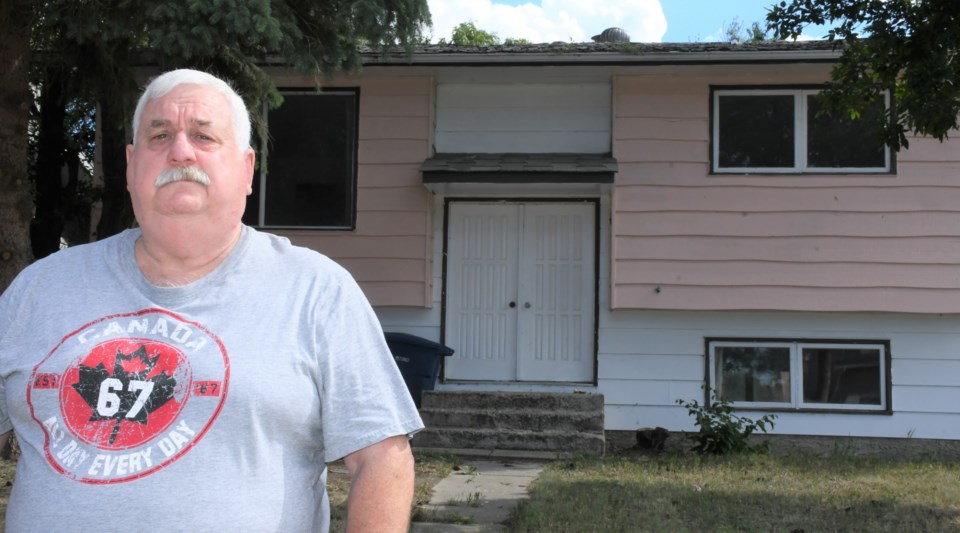Listening to the presentation during the recent city council meeting about 1511 Hastings Street West disappointed Carter Currie, who felt the accusations lobbed at him were untrue.
Dr. Elizabeth James, owner of the property, and her contractor, Glenn Batke, spoke during the Aug. 10 regular meeting about the condition of the property and the home on it. In particular, Batke claimed that Currie let his cats into the house to defecate and allegedly created a path to her house for his pets.
“When he piped in about that, that was the worst thing I’ve heard in the last while because it’s an outright lie,” Currie told the Express recently.
His six cats have not been the problem since he keeps them in his house, he explained. Instead, the problem has been the presence of feral cats birthing litters of kittens.
During Currie’s six years on the board of the Stray Cat Rescue and Protection Society (SCRAPS), they dealt with feral cats having kittens in the house or under the deck. Members managed to capture and tame five or six litters of kittens, before finding them adoptive homes. About five years ago, SCRAPS caught another two adult female cats and spayed them.
All of Currie’s six cats are feral-born and were birthed either in the backyard or in the home at 1511 Hastings Street West. He later adopted them from SCRAPS after they had been tamed.
He has not been a board member of SCRAPS for several years now.
Anne Marciszyn is the executive director at SCRAPS and has been involved with the board since 2016. She explained that she heard about cats in that area and in that house — along with the organization’s efforts to catch, spay and re-home them — before joining the board, but had never gone inside herself.
“Typically, we don’t go on properties (to catch cats) unless we have approval by owners …,” she said. “Our current team, we haven’t been involved in that house since the end of 2016. I know there have been cats that have allegedly been in the house and there have been lots and lots of kittens and cats caught in the vicinity. But I personally don’t know what’s inside the house.”
Unless there is a good reason, board members don’t go into abandoned homes to catch animals due to safety issues, Marciszyn said. Meanwhile, SCRAPS will usually seek the permission of area homeowners before putting out traps to catch feral animals.
“Oftentimes, there are locations where people will feed stray cats,” she added. “I think Carter has always been compassionate to feeding animals (that) are hungry and homeless.”
One reason the wild cats — along with skunks and raccoons — gained access into the house more than five years ago is that the property management company replaced a glass back-patio door with plywood, Currie said. That sheet of wood did not fit properly, while youths often snuck inside and dislodged the blockade.
James had the back deck removed several years ago and the patio door completely covered, which has prevented any access into the home aside from the front door, he continued. The only way animals can now get inside is if a window is broken.
James can blame his cats all she wants, Currie said, but she has never lived there, the house has been abandoned for 17 years, and it was used as a dog kennel for 15 years before that. Moreover, there’s no way Batke could know about the cats since he only started working on the house last year.
Whatever information they have, Currie added, is third-hand and coming from other people.
The next regular council meeting is Monday, Aug. 24.




